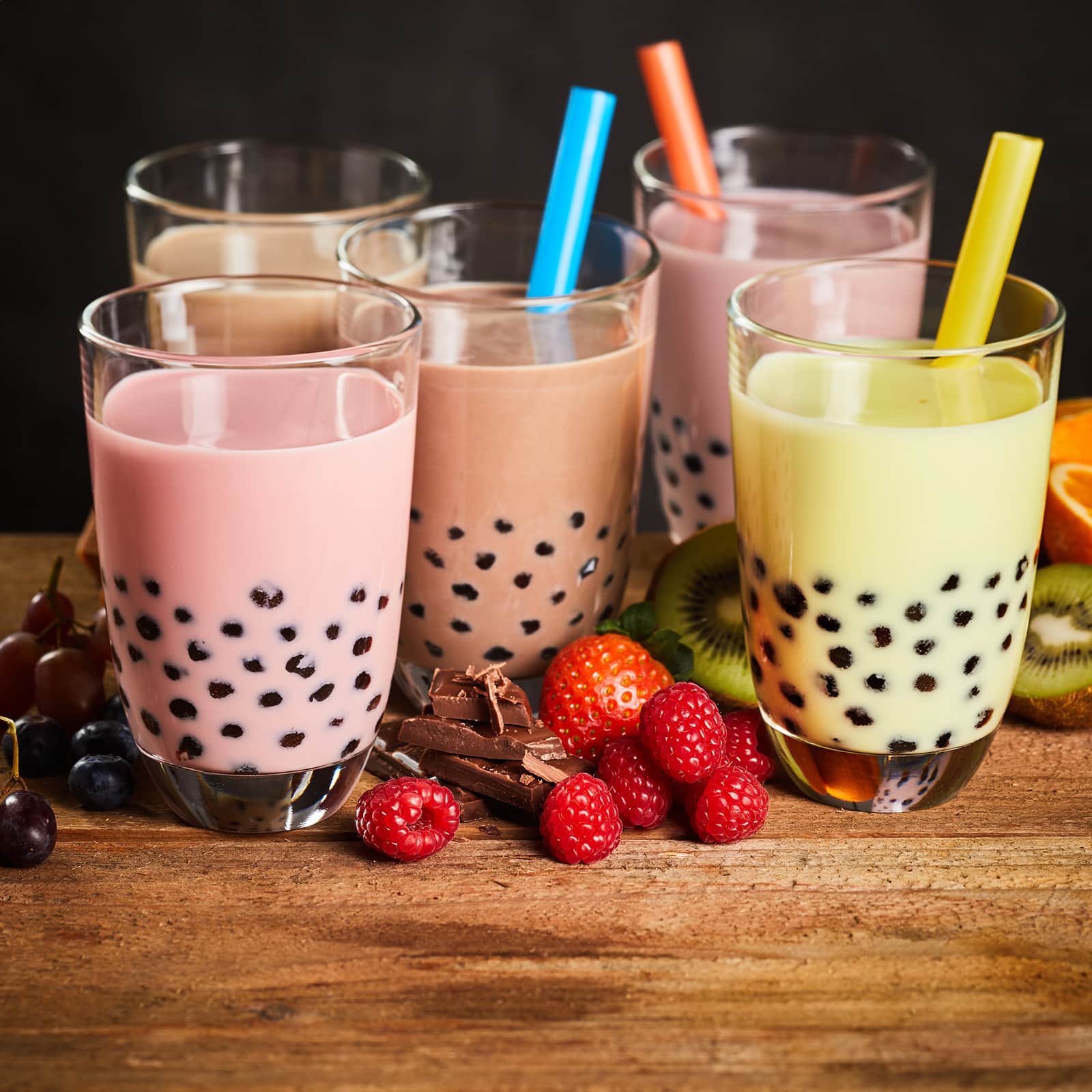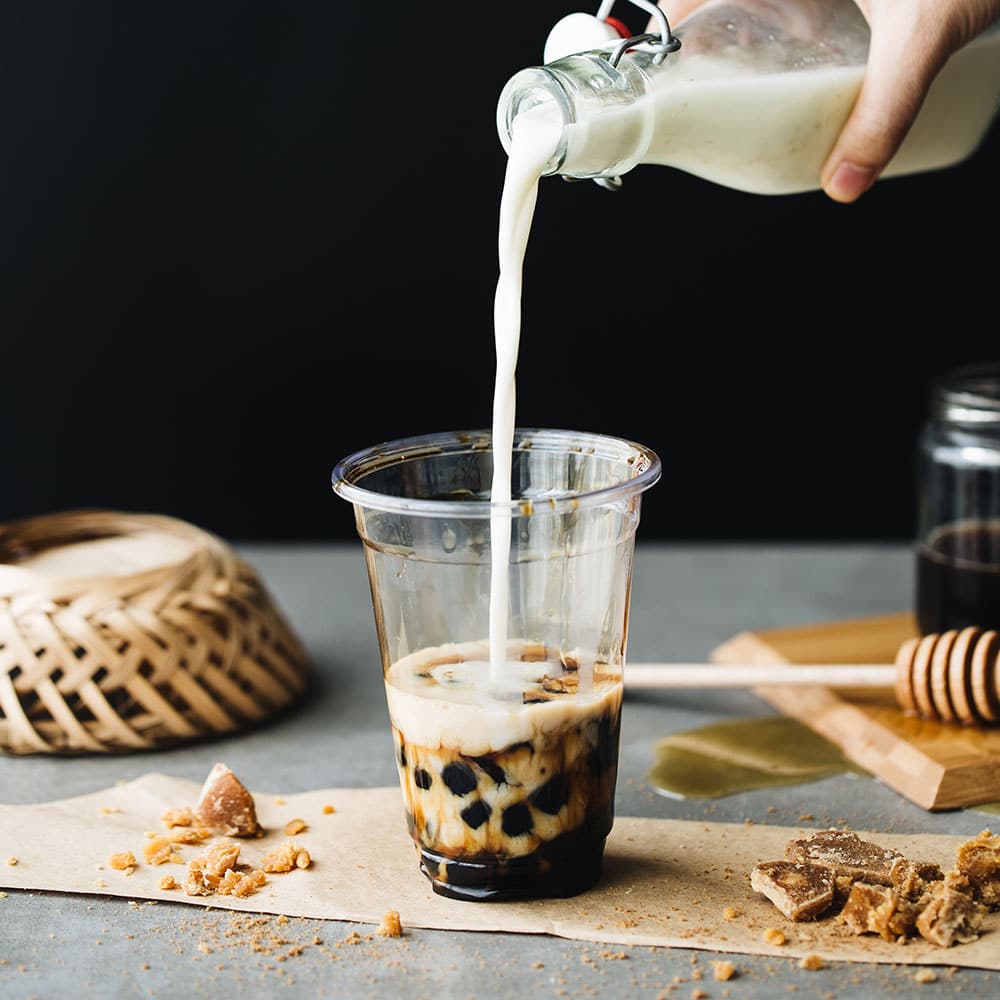Vietnamese milk tea, a palatable and tempting drink, has become a staple for the younger generation, offering a refreshing alternative to traditional teas and coffees. Discover more about it here.
Vietnamese milk tea, commonly known as “trà sữa,” is one of the most beloved Vietnamese drinks. It is a delightful fusion of aromatic tea, creamy milk, and chewy tapioca pearls, and it has drastically evolved from its humble beginnings. Learn more about its origins and recipes in this guide. We will also provide recommendations on where you can find old-fashioned Vietnamese milk tea.
1. What is Vietnamese milk tea?

Vietnamese milk tea, also known as “trà sữa,” typically features a sweetened and condensed milk-infused black or green tea base. It is a refreshing beverage with various flavor options. A popular variation of Vietnamese milk tea includes tapioca pearls. It is called Vietnamese bubble tea or Vietnamese boba tea (“trà sữa trân châu” in Vietnamese).
2. Origin of Vietnamese bubble tea

The origin of Vietnamese milk tea, known as “trà sữa,” can be traced back to the early 2000s, when it made its debut in Vietnam. Initially, it started modestly with small shops, often located near secondary and high schools.
In its early days, milk tea was a straightforward blend of tea and milk with a specific ratio. Toppings included a few black tapioca pearls and colorful glass jelly, and the flavors were quite simple, including options like chocolate, fruits, and other traditional tastes.
During this period, “trà sữa” gained popularity among 90s teens for its sweet taste combined with the delightful toppings. Positioned between the trendy appeal of coffee and the traditional nature of tea, “trà sữa” quickly became a preferred beverage for the youth.
Over the last four years, “trà sữa” has experienced a remarkable surge, evolving into a sensation within the beverage market. The drink has diversified with various tea types and flavors, with the introduction of plenty of unconventional flavor combinations.
Notably, the pricing landscape has also undergone significant changes, with renowned trà sữa brands now selling cups in the range of 60,000 to 80,000 VND, a departure from the earlier pricing of 10,000 to 15,000 VND per cup.
3. How to make the classic Vietnamese bubble tea from scratch at home
3.1. Milk tea

Ingredients:
- 50 grams of tea bags or loose tea
- 50 milliliters of condensed milk
- 100 milliliters of fresh milk
- 50 grams of brown sugar
- 50 grams of white sugar
- Boiling water
Instructions:
- Steep your tea bag in 300 millimeters of boiling water for 5 to 10 minutes to let the tea dissolve, then let it cool. Remove the tea bag, add condensed milk, stir well, and then pop it in the fridge.
- If you are using loose tea, let it steep in boiling water for 10 minutes. Strain the tea leaves, add condensed milk and fresh milk, and stir well.
Pro tip: For a frothy, colorful milk tea, pour it into a container, throw in 2 to 3 ice cubes, and shake it like you mean it. Your milk tea will look amazing, taste rich, and smell divine.
3.2. Tapioca pearl
-1200x676.jpg)
Ingredients:
- 30 grams of glutinous rice flour
- 55 grams of tapioca starch
Instructions:
- Combine tapioca starch, cocoa powder, glutinous rice flour, a pinch of salt, and white sugar in a clean bowl.
- Pour in boiling water slowly, and stir everything with a pair of chopsticks until it gets hard to stir.
- Knead the dough diligently until it forms a non-sticky block.
- Mold the dough into small pearls the size of soybeans. Roll them in flour to keep them from sticking. (Note: Work quickly with warm dough for beautiful, firm pearls.)
- Boil water, add the pearls, and cook for 3-5 minutes until they float. Stir while cooking to cook the pearls evenly.
- Dissolve 50 grams of brown sugar in 100 milliliters of water. Once the pearls are cooked, scoop them out and toss them into this sweet bath for crispy, sweet, and shiny pearls. If you prefer a lighter taste, soak them in plain water.
Besides tapioca, you can add syrup, matcha powder, and cacao to your milk tea for extra flavor. Jelly, peach, and Vietnamese flan cake also make fantastic toppings.
4. Best places to try the old-school Vietnamese boba tea
In the bustling streets of Ho Chi Minh City and the vibrant lanes of Hanoi, the aromatic allure of Vietnamese milk tea is never far away. These cities, pulsating with energy, offer a myriad of options for indulging in the sweet symphony of trà sữa.
From the ubiquitous street vendors to trendy cafes and dedicated milk tea shops, both Ho Chi Minh City and Hanoi boast an abundance of places where enthusiasts can savor the enchanting blend of tea and milk, accompanied by the delightful burst of tapioca pearls.
As mentioned, you have lots of options when it comes to Vietnamese milk tea in Hanoi. Some notable places include:
- 172 Viet Vuong Milk Tea: No. 172 Trieu Viet Vuong Street, Hai Ba Trung District, Hanoi.
- SayTea Milk Tea: No. 428 Tay Son Street, Dong Da District, Hanoi.
- Happy Time Milk Tea: No. 394 Bach Mai Street, Hai Ba Trung District, Hanoi.
Like Hanoi, there are many places for you to buy Vietnamese milk tea in Ho Chi Minh City. Here are a few spots to consider:
- Easy Life Milk Tea: No. 323 Nguyen Tri Phuong Street, District 5, Ho Chi Minh City.
- Phuong Hoang Milk Tea: No. 317B Nguyen Tri Phuong Street, District 5, Ho Chi Minh City.
- Ngo Gia Milk Tea: No. 339A/13 An Phu Tay Street, Binh Chanh District, Ho Chi Minh City.

